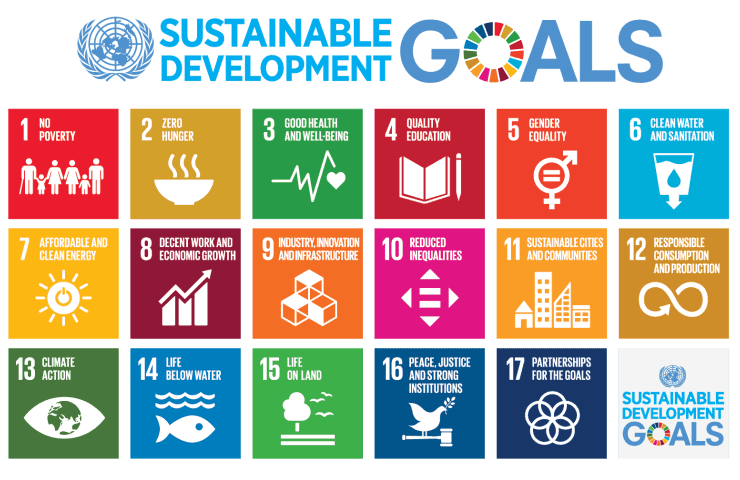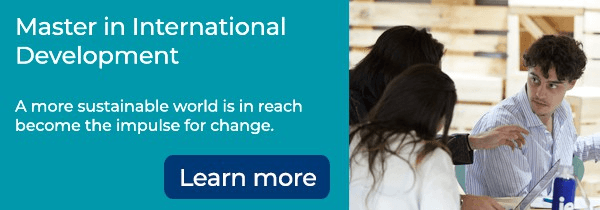- Home
- What Is The 2030 Agenda?
What is the 2030 Agenda?

The UN’s 2030 Agenda for Sustainable Development is a comprehensive plan that outlines how we can abolish poverty and transform the world into a peaceful, sustainable environment for all.
A Plan of Action to Change the World
In September 2015, the 2030 Agenda was endorsed by 193 member states that pledged to work towards social inclusion, environmental protection and sustainable economic growth. By committing to this agreement, the UN and its member countries across the globe are ensuring they build just and peaceful societies and work towards sustainability.
The Agenda has an overarching goal to change the world. It’s the most complete guide ever created, and details strategies for ending extreme poverty, helping the environment, and diminishing inequality. In order to accomplish this ambitious plan, nations will need to take extreme actions that are critical to improving our world for the better.
The Story behind the 2030 Agenda
Before the 2030 Agenda came to fruition, the eight United Nations Millennium Development Goals (MDGs) were a blueprint for the world’s governments and leading development institutions to tackle global issues like disease and hunger. Since the MDGs were set to expire at the end of 2015, the UN Sustainable Development Summit launched the 2030 Agenda in September 2015.
Behind the Agenda lie four decades of debate and dialogue focused on how to confront global challenges that affect the environment, society and economy. It’s a culmination of talks that have taken place from the 1972 UN Conference on Human Environment right up to the 2015 UN Sustainable Development Summit. After lengthy negotiations, the responsibility for enforcing the Agenda will be primarily up to national governments.
The 17 Sustainable Development Goals
The 17 Sustainable Development Goals devised by the United Nations are a crucial part of the 2030 Agenda. The goals bring together nations around the world to solve global challenges, promote growth, and create a sustainable future.
Many people assume that the SDGs comprise the entire 2030 Agenda, but that’s not exactly the case. Rather, these goals should be seen as a way to take the fundamental principles of the Agenda and convert them into concrete actions with definite results, which can be measured and evaluated.
Fundamental Principles of the 2030 Agenda
The 2030 Agenda consists of a few core principles:
Universality
The Agenda applies to all countries, even ones with low incomes and development issues. It is expected that every country will work towards sustainable development.
Leaving no one behind
All people will be considered, despite their state of need and location. Certain challenges and vulnerabilities will be recognized to provide proper aid and assistance.
Interconnectedness and invisibility
It should be noted that the 17 Sustainable Development Goals are interconnected and indivisible. World leaders who are implementing the goals must enact them as such, instead of just selecting a few and disregarding the rest.
Inclusiveness
Everyone should be acting to fulfill the 2030 Agenda, no matter their race, gender, ethnicity or identity.
Multi-stakeholder partnerships
Multi-stakeholder partnerships should be put in place to help spread knowledge, technology and financial resources as a means of enforcing the SDGs.
Five Central Dimensions
In addition to these essential principles, there are five dimensions that are vital to the 2030 Agenda: people, prosperity, planet, partnership and peace. If the world is going to achieve sustainability, it’s necessary we acknowledge these dimensions when it comes to social inclusion, economic growth and environmental protection.
The five dimensions must be considered when it comes to development policy decisions. Policy makers should make sure development interventions are brought forward with appropriate partnerships. They must also ensure that development interventions factor in social, economic and environmental consequences to achieve sustainability.
The Present and Future of the 2030 Agenda
Currently, nations all over the globe are working to fulfill the 2030 Agenda through detailed action plans and coordination units. Sweden, Finland and Denmark are performing the best when it comes to completing the SDGs, according to surveys conducted in 2018. However, the results of these surveys showed a grim reality: at the current rate countries are implementing the goals, no country will complete every goal in the Agenda by 2030. Specifically, political leadership in the United States and Russian Federation have shown little effort at institutionalizing the goals. In order for the goals to be executed by 2030, nations must commit to taking action as soon as possible. Additionally, individuals must be taking simple steps in their own lives to promote sustainability and equality.
Realizing the 2030 Agenda can result in a number of outstanding results. UN-backed commitments to combat climate change could lead to $26 trillion in economic benefits around the world and bring 65 million new “low-carbon jobs” by 2030. People from all walks of life can benefit by committing to change and seeing these goals through. By fulfilling the 2030 Agenda, our world could be transformed into a peaceful, sustainable place enjoyed by everyone.

